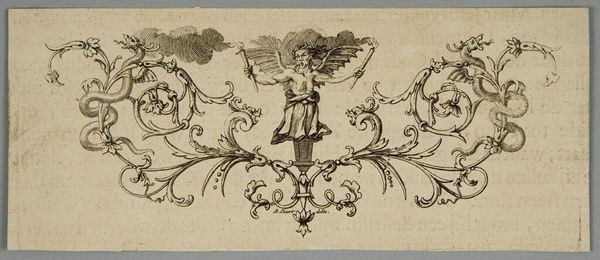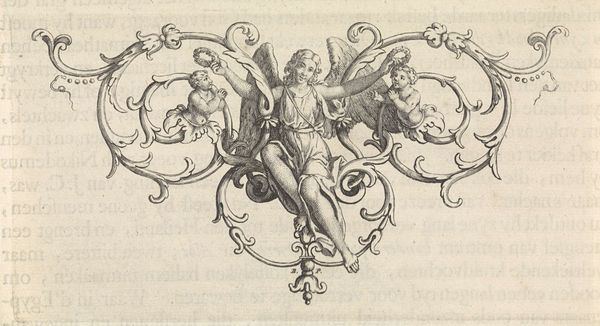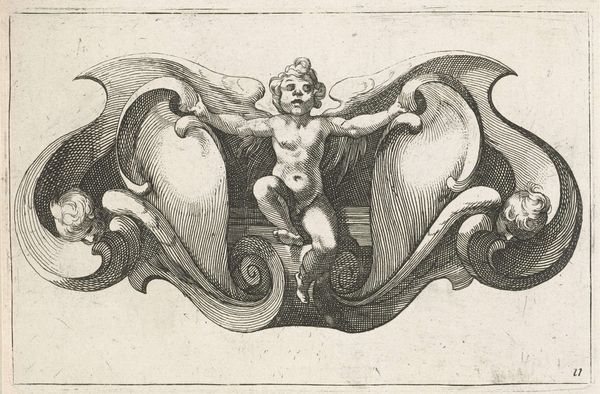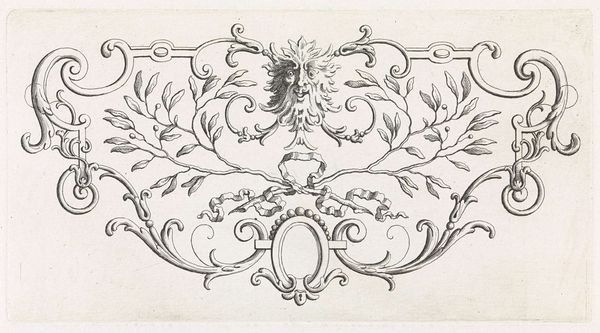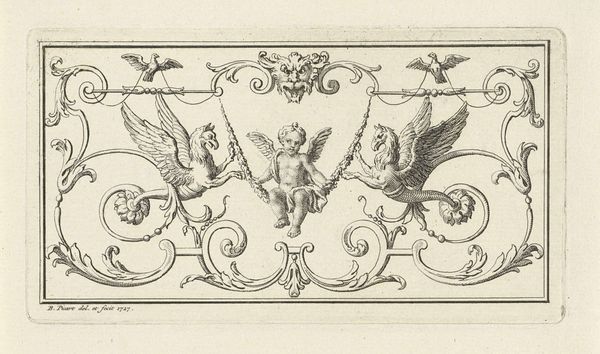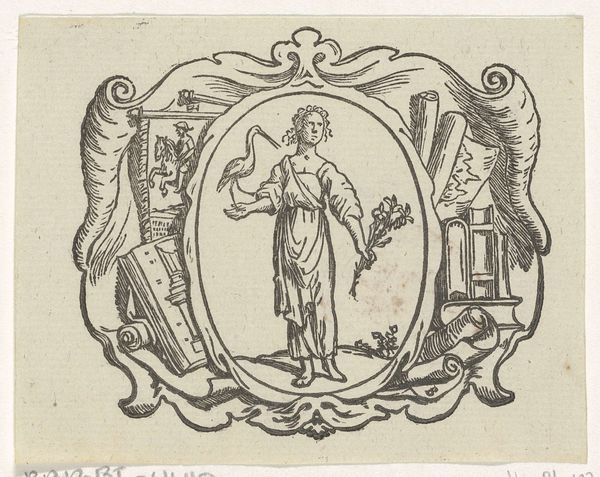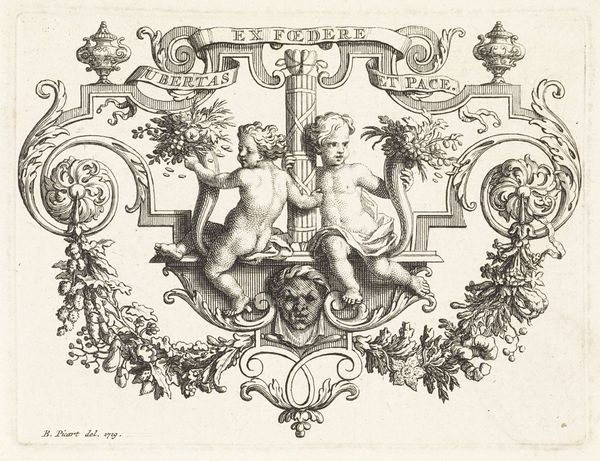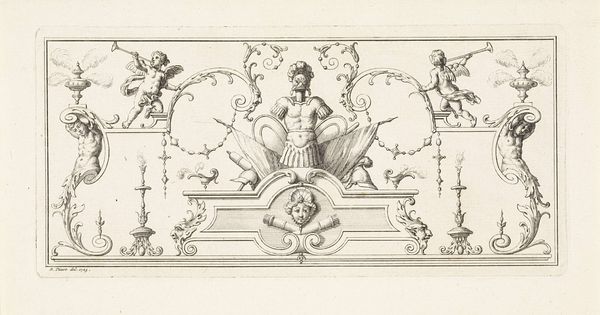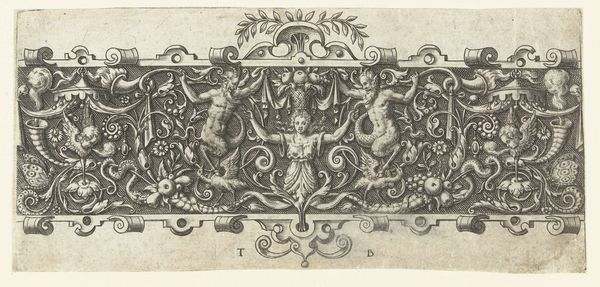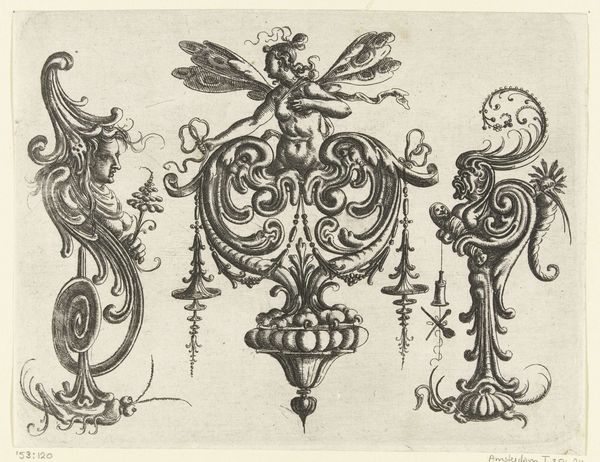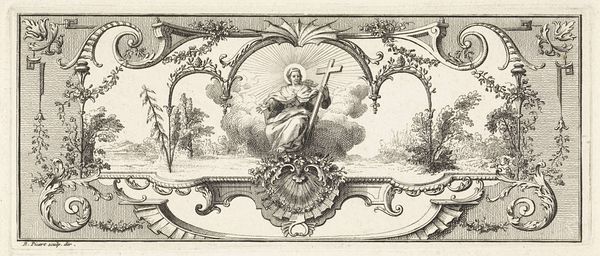
#
pen drawing
#
pen illustration
#
pen sketch
#
ink line art
#
linework heavy
#
pen-ink sketch
#
thin linework
#
pen work
#
sketchbook drawing
#
doodle art
Dimensions: height 59 mm, width 111 mm
Copyright: Rijks Museum: Open Domain
Curator: Looking at this pen drawing, my initial reaction focuses on its symmetry and detail. There's a captivating visual rhythm created by the intricate lines. Editor: This piece is called “Harpij in ornamenten,” created around 1715 by Bernard Picart, currently held in the Rijksmuseum. Beyond its clear aesthetic appeal, I think it reflects specific anxieties present in the era regarding morality and the seductive dangers linked to femininity. Curator: I can certainly see that, especially considering the harpy figure in the center. Picart’s masterful technique directs our gaze towards the emotional heart of the composition, emphasizing the interplay of positive and negative space. What could this mythological figure signify about gendered anxieties? Editor: Consider that harpies in mythology were portrayed as winged, predatory creatures, often seen as instruments of divine punishment, or at the very least, chaotic forces of nature. Picturing them within intricate ornamentations – snakes, vegetative ornamentation -- implies an attempt to tame or understand forces deemed ‘dangerous’ or transgressive at the time, linking societal regulation to identity and control. Curator: Interesting, but doesn't focusing solely on the 'danger' potentially flatten Picart's technical accomplishment? Note the varying thickness of lines achieved with ink. He skillfully conveys the interplay between shadow and light, emphasizing textures. Editor: But consider, for instance, the gaze of this harpy. She’s looking straight outwards. The audience of 1715 would, in essence, be in an active conversation about ethics and its meaning in their rapidly transforming societal landscape. Do they control ‘her’, or does she call ‘them’ to accountability? Curator: I appreciate how you're highlighting those possible readings by situating the piece within that historical context, emphasizing art as social mirror. I focused almost exclusively on its technical refinement. Editor: And you prompted us to think deeper on how it uses that very skill to enhance its effect. It is a great example of where aesthetic precision and culturally meaningful visual vocabulary come together.
Comments
No comments
Be the first to comment and join the conversation on the ultimate creative platform.
